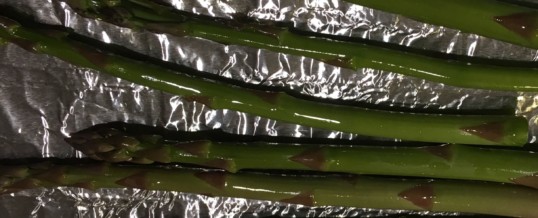
Asparagus is one of the few vegetables that comes back on its own every year. But, it takes over two years for asparagus to begin growing to a point where you can harvest and eat it.
Asparagus requires its own garden patch and lots of attention. A whole lot. It is not easy to cultivate, but it is quite hardy once it gets going.
It’s worth the effort. Once it is established, it can grow for 20 years.
Asparagus is a member of the lily family. The name means “shoot” or “sprout.”
The Ancient Egyptians, Greeks, and Romans valued asparagus. It is one of the earliest recorded vegetables.
There is a depiction in Egypt from 3000 B.C. showing asparagus being offered as a gift. The Greeks and Romans cultivated it for food and its perceived medicinal value, including the assumption that it was an aphrodisiac.
Today, many health benefits are claimed for those who eat asparagus. These include antioxidants, which, according to the website WebMD, “…can play a role in the management of some medical conditions, such as some cancers…”, and help with diabetes, digestion, a hangover, and weight loss.
Weight loss makes sense. One-half cup of asparagus is only 20 calories and it is filling, which reduces hunger. I can attest that this actually works.
Asparagus made its way to the US in the mid 1800s. It is grown on a large scale now in California and Michigan. There are even asparagus festivals and related activities in both states, celebrating the vegetable. However, North America is behind China, Mexico and Germany when it comes to production.
Through production techniques involving covering the shoots with dirt to prevent photosynthesis, a product called white asparagus is grown. There’s also a purple variety. Most of what we see in restaurants and at grocery stores is green.
Even though it isn’t the easiest vegetable to get started, you don’t have to be a commercial farmer to grow it. It can be grown in a home garden if you have time and patience.
Each shoot can grow to 5 feet, but should be harvested when they are 7-9 inches. And you have to harvest it regularly. Under ideal conditions it can grow 10 inches in 24 hours. Yes, you read that right.
Its growing period in the Southern US is only a few weeks each spring, which explains why it is so expensive to buy. Asparagus is very nutritious, high in Vitamins A, C, E, K, and others.
Asparagus has a male and female part of the plant. The female is flowery and not edible. The male asparagus shoot is what is harvested for food.
There are an unlimited number of recipes for asparagus. One of the most common is to roast it with butter and salt. However, if you like grilling, bacon-wrapped asparagus is hard to beat when it comes to a side dish.
Two years ago, my wife decided that she was going to grow asparagus. I had no doubt that she would be successful. About 20 years ago, we tilled up a small area in the back yard to grow potatoes, and since then, that has expanded to five different garden areas, and a greenhouse.
All of this has been grown organically. That means no poisons of any kind. The asparagus was planted and maintained just as all of her other crops.
Since she began gardening, I’ve paid more attention to what vegetables cost in the store. And the difference in taste between what she grows and what we pick up at the market.
Needless to say, stepping outside into the garden and harvesting what she’s grown tastes far better than what sat on the produce aisle for who knows how long.
Today, Americans don’t think much at all about their next meal. Not where it came from, whether it will be there when they’re ready to eat it; nor do most entertain any concern about what they’ll do if they can’t leisurely stroll down the grocery store aisles, load their cart, and then swipe a card through a machine to pay for it and then have someone carry it to their vehicle.
The good news is that the number of Americans who are getting back to gardening is on the rise. According to Garden To Table, which includes five years of data collected between 2008 and 2013, and published by The National Gardening Association, more of us in this country are getting back to our gardening roots. Here are some of the highlights from the report:
*35% of all US households, or about 42 million of us, participated in gardening in 2013.
*Between 2008 and 2013, the amount spent on food gardening climbed 40% from $2.5 to 3.5 billion.
*The number of first-time gardeners saw 20% growth in 2009 and continued to climb during the data collection period.
My wife is part of this increasing number of Americans who like knowing what’s in what they eat. And her very first harvest of asparagus was amazing at dinner last night.
It was coated in olive oil, and lightly seasoned with salt and pepper.
There are a lot of claims of benefits from eating asparagus. I haven’t noticed any weight loss yet, but I did wake up feeling frisky and without a hangover.
©2018 John Moore
John’s book, Write of Passage: A Southerner’s View of Then and Now is available on Amazon.
Email John at John@TheCountryWriter.com.
MAR
2018
